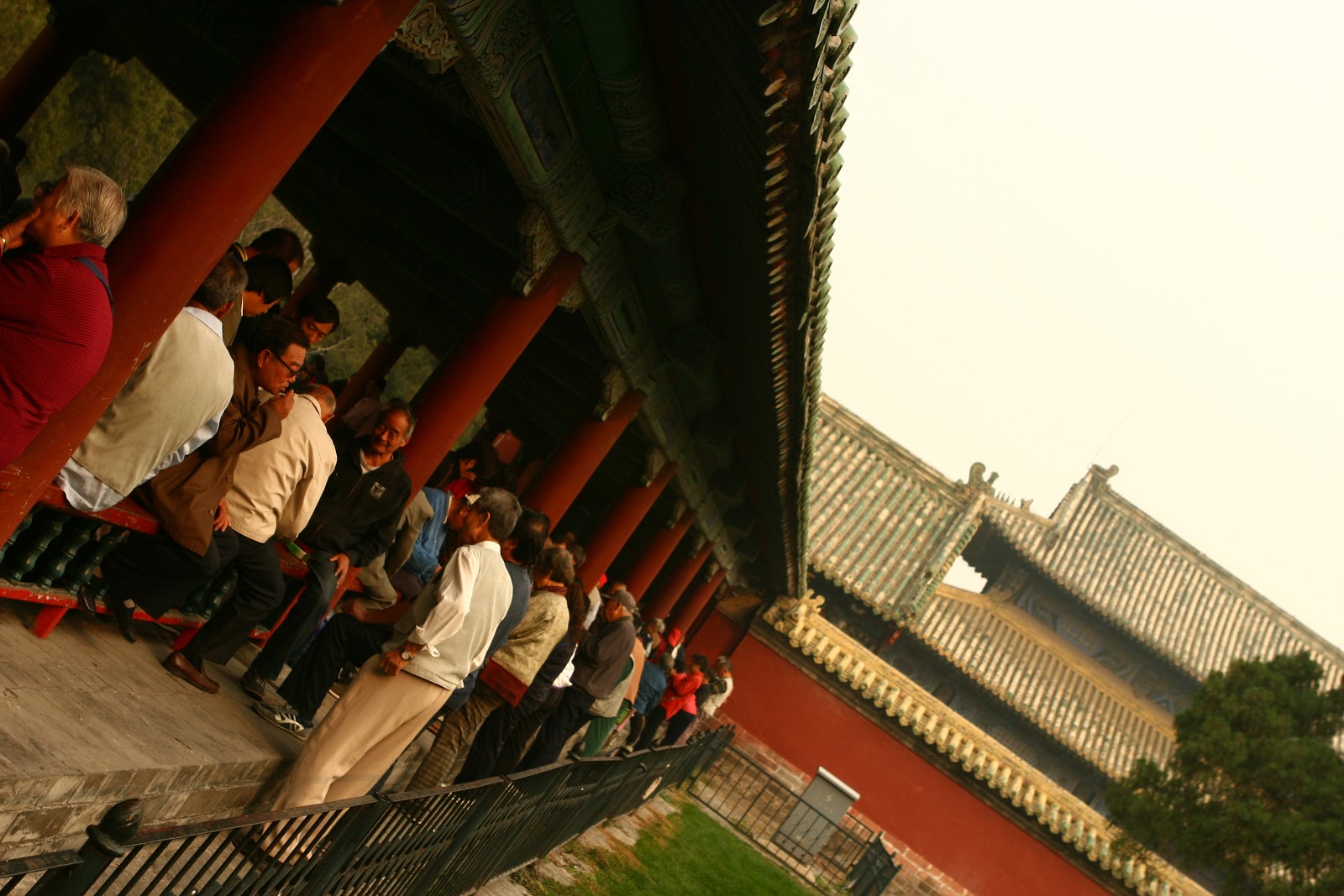Couchsurfing hosts became less numerous as we continued south in China, and we feared we would be confined to hostels from here until Singapore. Mix hostel was a nice place to stay though, and had good information on the things to see in town. They recommended visiting a nearby Buddhist temple to hear the monks chanting at 6pm. We went for a walk and decided to have a look at a Buddhist nunnery beforehand.
They were chanting already, and it was a beautifully sonorous sound. Dani and I stood mesmerised as we watched them sway and perform acts of worship.
The experience was so unexpected and amazing that we decided not to visit the temple, and went for dinner instead. We continued our exploration of the cheap eateries that locals visit daily, but as usual, our only guide was a list of chinese characters and prices on the wall, which let us know it was around our budget: 70 pence / $1 per dish.
To communicate our dietary needs, Dani copied this Chinese script out of a phrasebook, and so far we have not been given anything meaty. However, we had a time period of continually getting boring noodle soups, so have since had to add more script about fried noodles and spicy sauces.
Cheng Du is home to the Panda Breeding and Research Centre, which actually seems to be doing a lot of good in terms of in situ (within captivity) work, but we saw nothing of their acheivements ex situ (in the wild), which is surely where the most important work needs to be done. Nevertheless, the large site had none of the cheesiness or disneyfication that we had seen elsewhere in China, instead opting for subtle enclosures and growing forests of gorgeous bamboo.
It was as funny to watch the Chinese tourists as it was to observe the pandas, as the animals are held in the highest esteem. I joked with a guy on the train that maybe we could taste some panda in Cheng Du, but he explained that this would never happen, because the Chinese love them too much. They are the perfect example of a flagship species - wildly popular with the public, and therefore useful as a ralling cry to conservation.
To see a pandas life-cycle, it became very obvious why they are so critically endangered; mating so infrequently, producing so few offspring, and having such incredibly vulnerable cubs that of the two normally born one almost always perishes, and frequently both die when very small. We got to see this one-month old cub in an incubation chamber, removed from it's mother because it was the second of two cubs.
The teenage pandas were the most fun and lively, constantly playing and fighting, and with a penchant for climbing trees. These two noiselessly battled for 15 minutes, rolling down the steps, mock-biting and chasing each other.
They were chanting already, and it was a beautifully sonorous sound. Dani and I stood mesmerised as we watched them sway and perform acts of worship.
The experience was so unexpected and amazing that we decided not to visit the temple, and went for dinner instead. We continued our exploration of the cheap eateries that locals visit daily, but as usual, our only guide was a list of chinese characters and prices on the wall, which let us know it was around our budget: 70 pence / $1 per dish.
To communicate our dietary needs, Dani copied this Chinese script out of a phrasebook, and so far we have not been given anything meaty. However, we had a time period of continually getting boring noodle soups, so have since had to add more script about fried noodles and spicy sauces.
Cheng Du is home to the Panda Breeding and Research Centre, which actually seems to be doing a lot of good in terms of in situ (within captivity) work, but we saw nothing of their acheivements ex situ (in the wild), which is surely where the most important work needs to be done. Nevertheless, the large site had none of the cheesiness or disneyfication that we had seen elsewhere in China, instead opting for subtle enclosures and growing forests of gorgeous bamboo.
It was as funny to watch the Chinese tourists as it was to observe the pandas, as the animals are held in the highest esteem. I joked with a guy on the train that maybe we could taste some panda in Cheng Du, but he explained that this would never happen, because the Chinese love them too much. They are the perfect example of a flagship species - wildly popular with the public, and therefore useful as a ralling cry to conservation.
To see a pandas life-cycle, it became very obvious why they are so critically endangered; mating so infrequently, producing so few offspring, and having such incredibly vulnerable cubs that of the two normally born one almost always perishes, and frequently both die when very small. We got to see this one-month old cub in an incubation chamber, removed from it's mother because it was the second of two cubs.
The teenage pandas were the most fun and lively, constantly playing and fighting, and with a penchant for climbing trees. These two noiselessly battled for 15 minutes, rolling down the steps, mock-biting and chasing each other.
The adult pandas on the other hand were generally sedentary and only interested in eating. We anthropomorphised this one into a fat slob on the couch, stretching for food just out of reach but never getting up.
While in Cheng Du we also explored the beautiful tea gardens located in People's Park. A group of musicians who had met up to play gave us their rendition of Auld Lang's Syne, and bizarrely, Jingle Bells, all played on traditional instruments. We really enjoyed watching the Chinese relax and drink tea as they whiled away the day.

































































